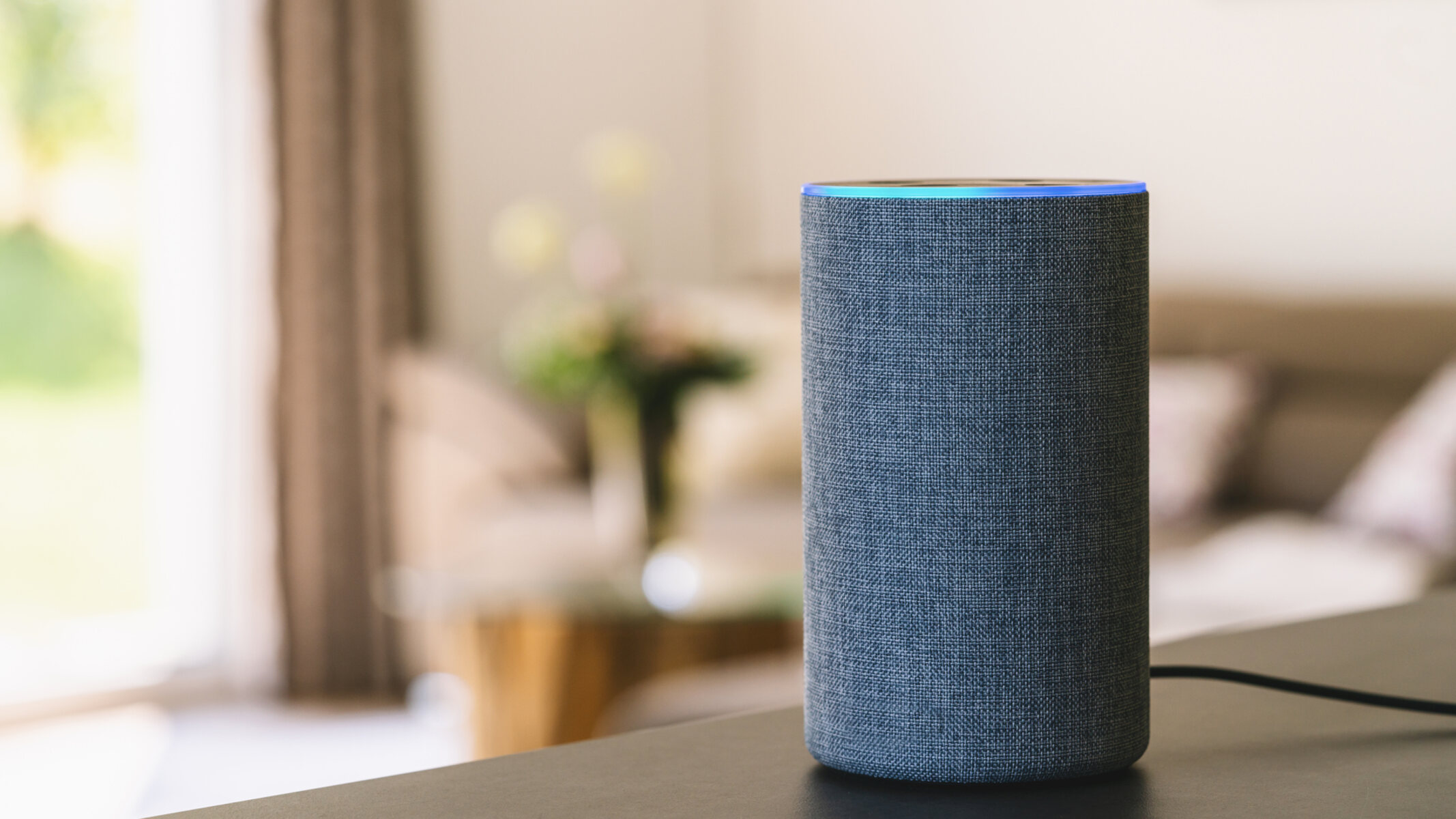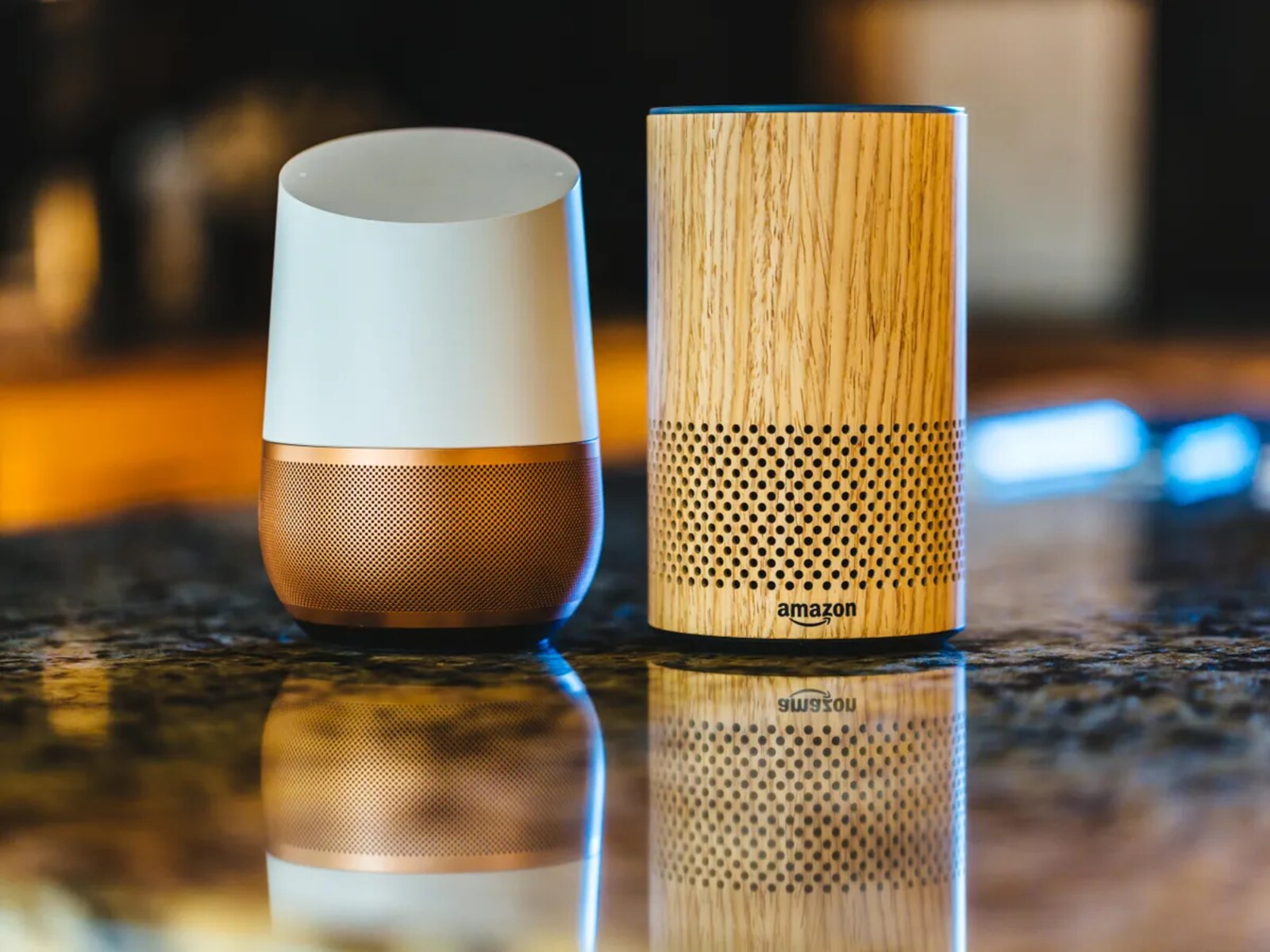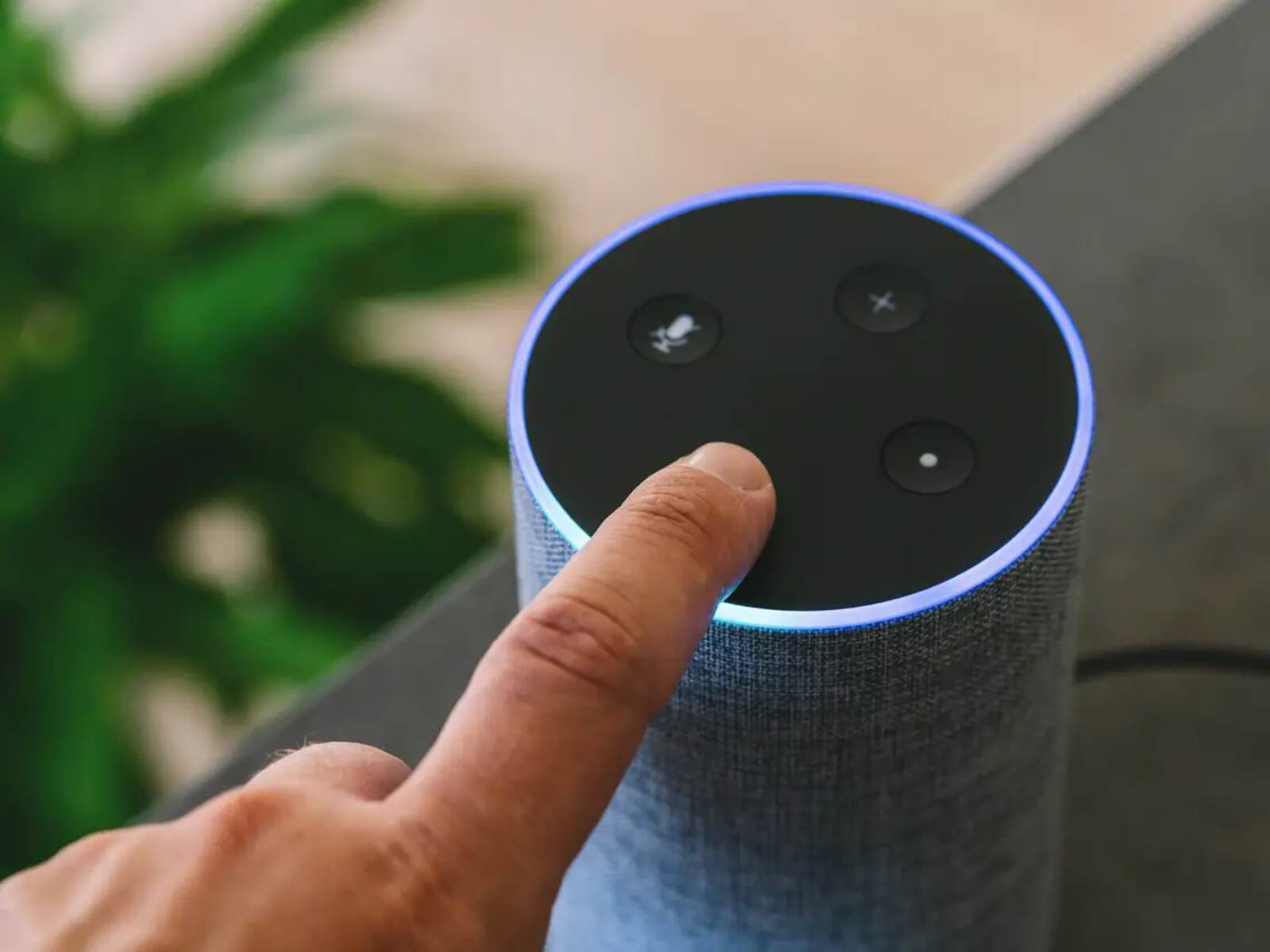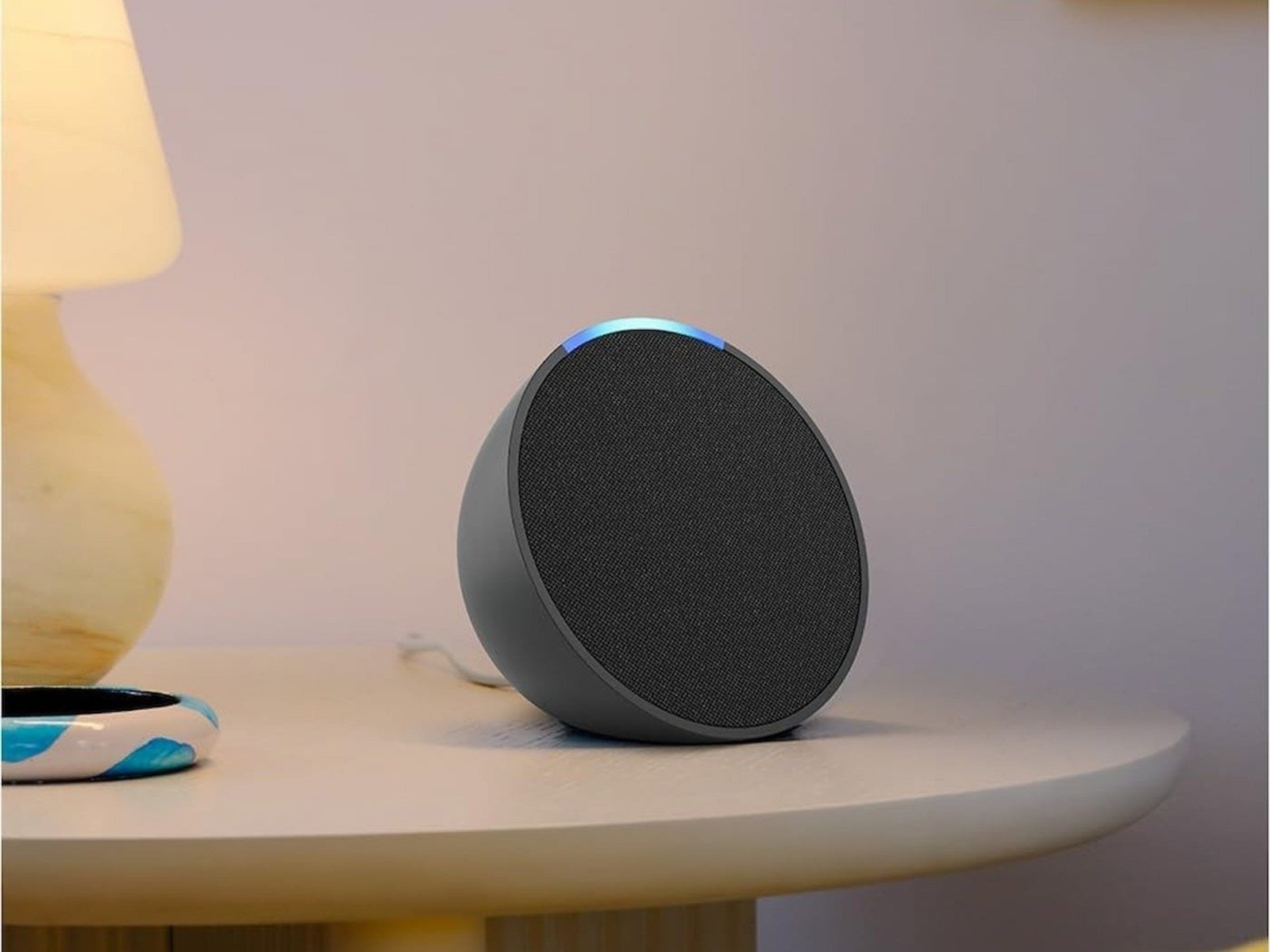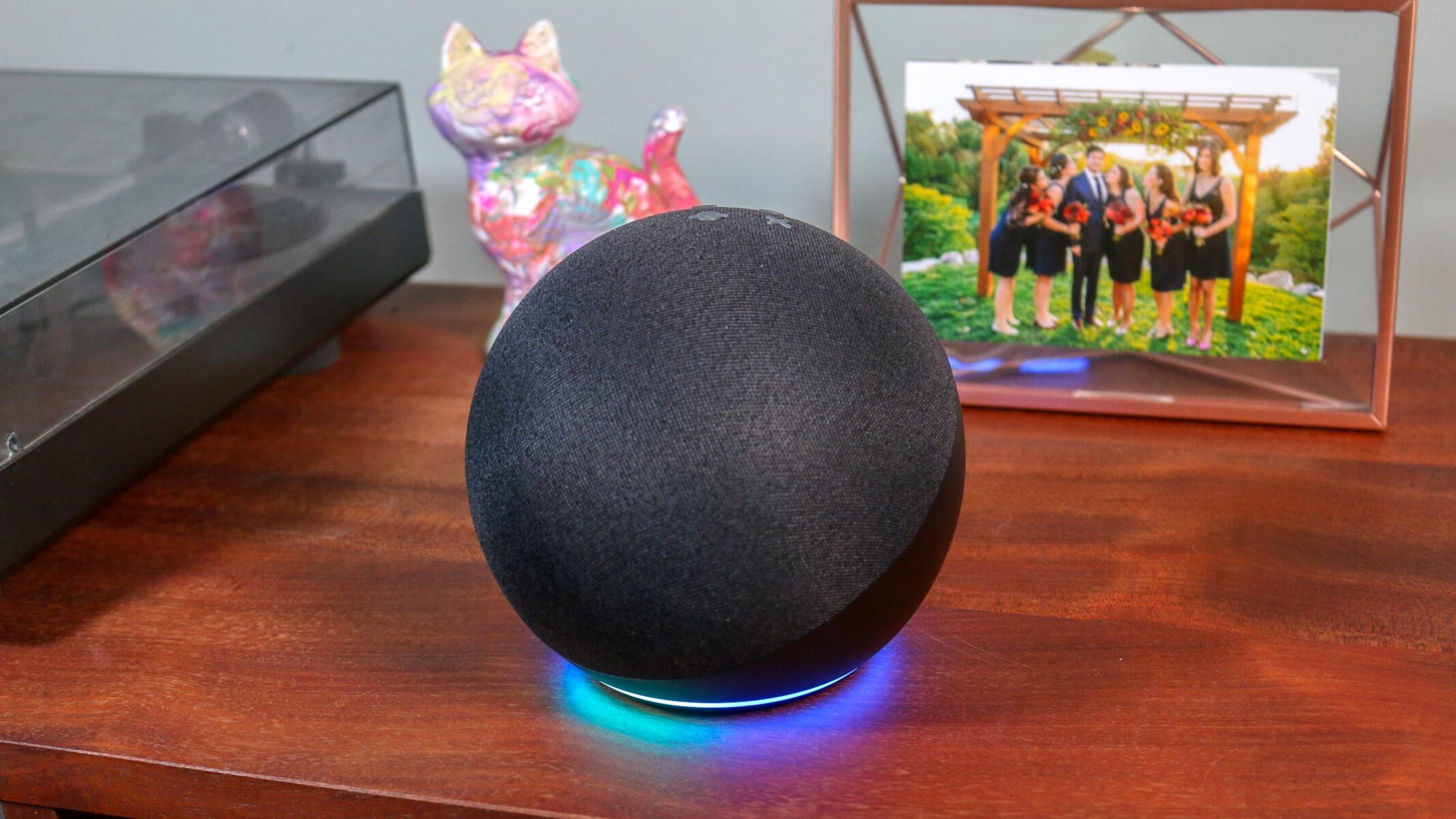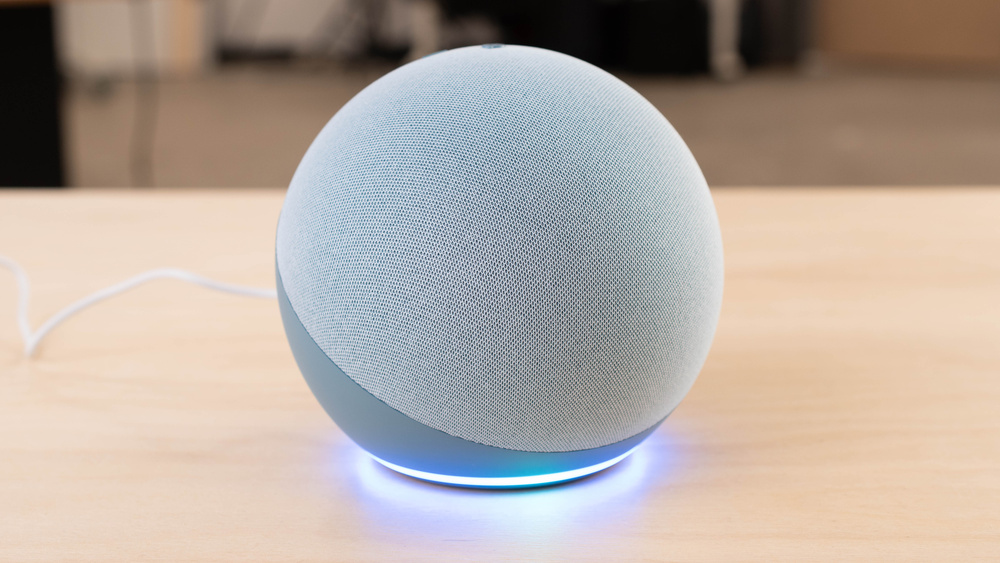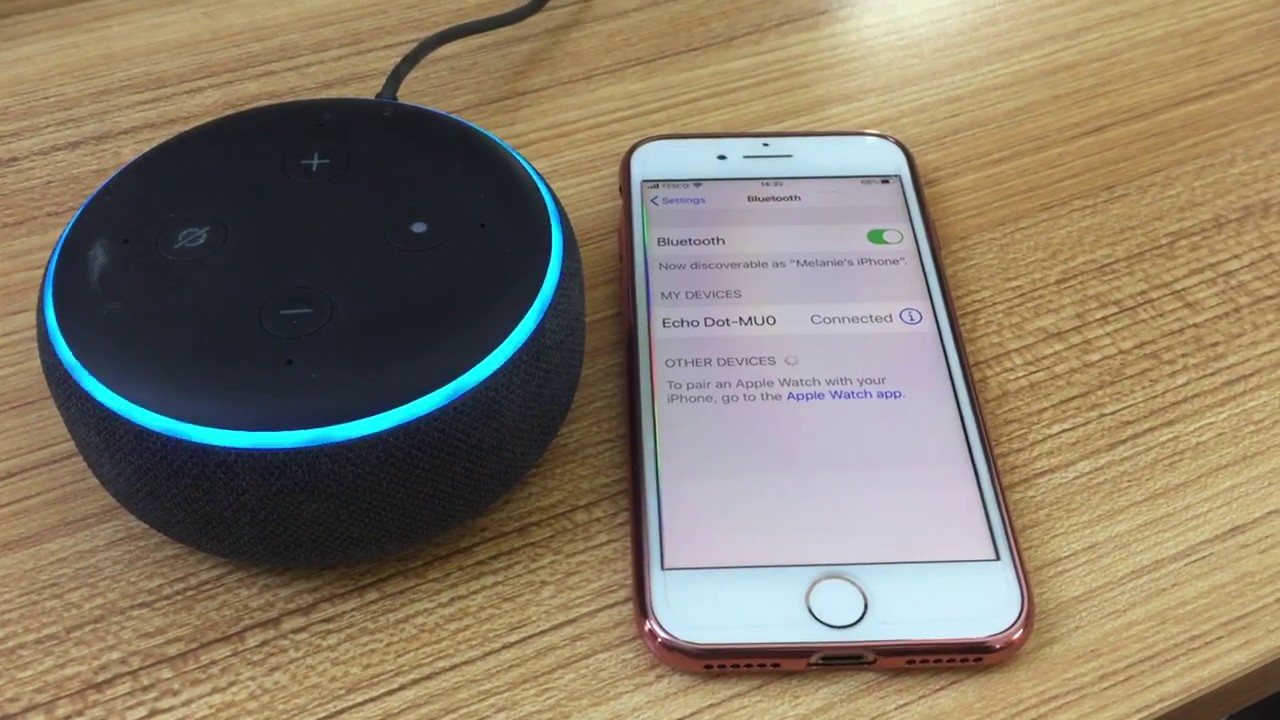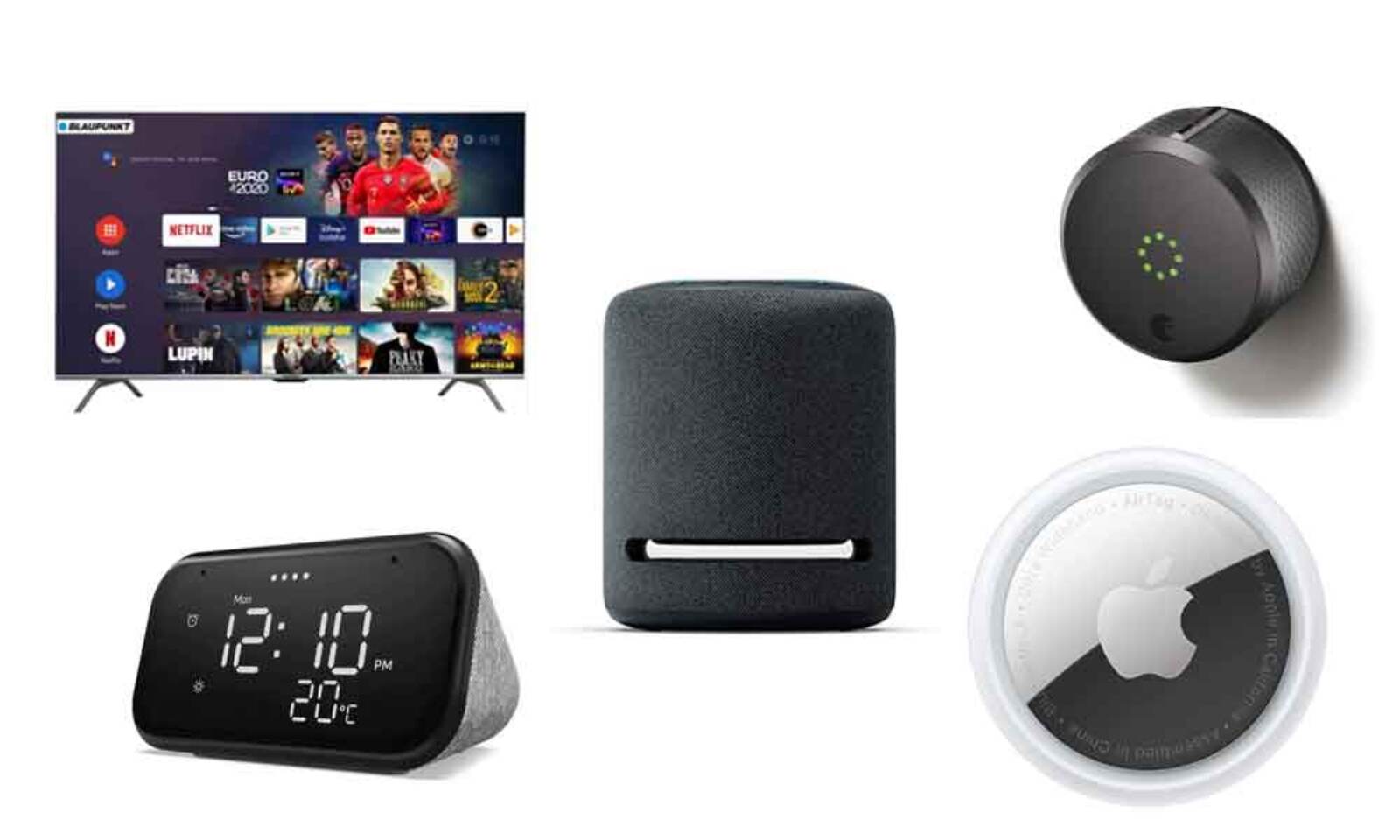Introduction
Welcome to the world of smart speakers with Alexa, the voice-controlled virtual assistant developed by Amazon. With the rapid advancement of technology, smart speakers have become an integral part of many households, revolutionizing the way we interact with our homes and the online world.
A smart speaker with Alexa combines the functionality of a traditional speaker with the power of a virtual assistant. By simply speaking a command, you can play music, control smart home devices, get answers to questions, set reminders, and much more. Alexa uses advanced natural language processing and machine learning algorithms to understand and respond to voice commands, making the user experience highly intuitive and convenient.
One of the key advantages of smart speakers with Alexa is their seamless integration with a wide range of smart home devices and services. Whether it’s adjusting the thermostat, turning off the lights, or locking the doors, Alexa can control various aspects of your smart home with just a voice command. Furthermore, Alexa is constantly learning and improving, as Amazon regularly updates its software to introduce new features and enhance its capabilities.
In this article, we will delve into the fascinating world of smart speakers with Alexa. We will explore how Alexa works, discuss some popular smart speakers with Alexa, examine the features and functions they offer, and provide guidance on how to set up and use a smart speaker with Alexa. Additionally, we will touch on privacy and security considerations associated with owning a smart speaker.
So, whether you’re a tech enthusiast looking to upgrade your home or a curious individual interested in the latest advancements in voice-controlled technology, join us as we unravel the wonders of smart speakers with Alexa.
What is a Smart Speaker with Alexa?
A smart speaker with Alexa is a versatile device that combines the functionality of a traditional speaker with the power of a virtual assistant. It is designed to be controlled using voice commands, allowing users to interact with the device without the need for physical buttons or screens.
At the heart of a smart speaker with Alexa is Alexa, the intelligent voice assistant developed by Amazon. Alexa is capable of understanding natural language commands and responding to them with relevant information or actions. It uses advanced machine learning algorithms and artificial intelligence to continuously improve its capabilities and provide a seamless user experience.
Smart speakers with Alexa come in various shapes and sizes, ranging from compact devices that fit in the palm of your hand to larger units that can fill a room with high-quality sound. These speakers are equipped with an array of microphones that can pick up voice commands from all directions, ensuring that Alexa can hear you even from a distance or in noisy environments.
The primary function of a smart speaker with Alexa is to act as a hub for controlling smart home devices and accessing a wide range of online services. By connecting compatible smart home devices to the speaker, users can control everything from lights and thermostats to door locks and security cameras with simple voice commands. Additionally, with the ability to connect to the internet, these speakers can stream music, play podcasts, answer questions, set alarms and reminders, provide weather updates, and much more.
Another key feature of smart speakers with Alexa is their ability to integrate with third-party services and apps, expanding their functionality and providing a more personalized experience. With thousands of skills available in the Alexa Skills Store, users can tailor their smart speaker to their specific needs and interests. From ordering food and requesting rides to playing games and learning new recipes, the possibilities are virtually endless.
In summary, a smart speaker with Alexa is a device that combines the power of a virtual assistant with the convenience of a speaker. Its ability to understand and respond to voice commands makes it a valuable addition to any smart home, offering a hands-free and intuitive way to control devices, access information, and enjoy a wide range of online services.
How does Alexa work?
Alexa, the voice assistant behind smart speakers with Alexa, is powered by advanced natural language processing (NLP) and machine learning algorithms. These technologies enable Alexa to understand and interpret voice commands, providing accurate and relevant responses to user queries. Here’s a breakdown of how Alexa works:
1. Wake Word Detection: Alexa is always listening for a wake word, which is typically “Alexa,” “Echo,” “Hey Alexa,” or “Computer.” When the device detects the wake word, it starts recording and processing the subsequent voice command.
2. Speech Recognition: After detecting the wake word, the smart speaker captures the voice command and sends it to the cloud for speech recognition. Alexa’s sophisticated algorithms break down the audio into individual words and analyze their context.
3. Natural Language Understanding: Once the voice command is transcribed, Alexa uses natural language understanding (NLU) techniques to extract the meaning and intent behind the words. This involves identifying keywords, understanding sentence structures, and considering the context of the conversation.
4. Skill Execution: After understanding the user’s intent, Alexa determines the appropriate action or skill to execute. Skills are essentially third-party apps that extend Alexa’s functionality. For example, if you ask Alexa for the weather forecast, it will execute a “Weather” skill to retrieve and deliver the relevant information.
5. Response Generation: Once the skill is executed, Alexa generates a response that is relevant to the user’s query. This could be spoken aloud by the smart speaker or displayed on a companion device with a screen, such as an Echo Show.
6. Continuous Learning: Amazon constantly works on improving Alexa’s accuracy and expanding its capabilities. Alexa learns from user interactions and feedback, allowing it to provide more precise responses over time.
It’s important to note that Alexa respects user privacy, and only starts processing voice commands after detecting the wake word. Additionally, Amazon gives users control over their voice recordings and provides the option to delete them if desired.
In summary, Alexa utilizes advanced NLP and machine learning algorithms to understand voice commands, execute skills, and generate relevant responses. This sophisticated technology is what makes smart speakers with Alexa so intuitive and user-friendly, enabling seamless interaction and empowering users with a powerful virtual assistant at their fingertips.
Popular Smart Speakers with Alexa
As the popularity of smart speakers with Alexa continues to grow, there is a wide range of options available to suit different needs and preferences. Here are some of the most popular smart speakers with Alexa:
1. Amazon Echo (4th Generation): The Amazon Echo is the flagship smart speaker in the Alexa lineup. It features a sleek design, powerful audio, and a built-in smart home hub. With its wide range of functionalities and compatibility with various smart home devices, the Echo is a versatile choice for those looking to integrate voice control into their homes.
2. Amazon Echo Dot (4th Generation): The Echo Dot is a compact and affordable option that offers most of the features of the larger Echo at a lower price point. It is great for smaller spaces or for individuals who want to expand their smart home with multiple devices.
3. Amazon Echo Show (2nd Generation): If you want a smart speaker with a built-in display, the Echo Show is the perfect choice. It combines the functionality of a smart speaker with the convenience of a touchscreen, allowing you to view visual content, make video calls, watch videos, and even control compatible smart home devices using the display.
4. Amazon Echo Studio: For audiophiles who crave premium sound quality, the Echo Studio delivers an immersive audio experience with its high-fidelity speakers and Dolby Atmos support. It is designed to create a 3D sound experience, making it ideal for music enthusiasts and home theater setups.
5. Sonos One: The Sonos One is a powerful smart speaker that offers excellent sound quality and seamless integration with Alexa. It also supports Apple AirPlay 2 and works well with other Sonos speakers, allowing you to create a multi-room audio system in your home.
6. Bose Home Speaker 500: Known for their audio prowess, Bose delivers impressive sound performance in the Home Speaker 500. With built-in Alexa and a built-in color display, it provides a rich and immersive smart speaker experience.
7. Google Nest Hub Max: While not an Amazon product, the Nest Hub Max is worth mentioning. It combines Google Assistant with a 10-inch HD display, making it a versatile smart home device for controlling your smart devices, watching videos, and even displaying your favorite photos.
These are just a few examples of the many smart speakers with Alexa available on the market. When choosing a smart speaker, consider factors such as audio quality, size, design, and compatibility with your existing smart home devices. With the wide range of options available, you can find the perfect smart speaker with Alexa to enhance your home entertainment and automation experience.
Features and Functions of Smart Speakers with Alexa
Smart speakers with Alexa offer a multitude of features and functions that make them an essential part of any modern home. Here are some key features and functions that you can expect from these devices:
1. Voice Control: The primary function of a smart speaker with Alexa is its ability to be controlled through voice commands. Whether you want to play music, set timers, or ask for information, you can simply speak to the device and Alexa will respond.
2. Music Streaming: Smart speakers with Alexa are excellent music streaming devices. You can access various music services, including Amazon Music, Spotify, and Apple Music, and play your favorite songs, playlists, or even request specific genres or artists.
3. Smart Home Integration: One of the standout features of Alexa-enabled smart speakers is their ability to control compatible smart home devices. With just a voice command, you can dim the lights, adjust the thermostat, lock the doors, or control other smart devices in your home.
4. Information and Assistance: Alexa is a treasure trove of information. You can ask Alexa questions about almost anything, including weather forecasts, general knowledge queries, sports scores, and even receive step-by-step cooking instructions or quick facts about famous personalities.
5. Reminders and Alarms: You can set reminders or alarms using a smart speaker with Alexa. Whether it’s to wake you up in the morning, remind you of important tasks, or even schedule recurring reminders, Alexa can help you stay organized and on top of your schedule.
6. Hands-Free Calling and Messaging: Some smart speakers with Alexa allow you to make hands-free calls and send voice messages to your contacts. This feature is particularly useful when your hands are busy or if you want to communicate with someone in another room.
7. Multi-Room Audio: If you have multiple smart speakers with Alexa in different rooms, you can create a synchronized multi-room audio setup. This allows you to play music throughout your home simultaneously or play different songs in different rooms.
8. Skills and Third-Party Integrations: Alexa offers a vast array of skills that extend its capabilities. These skills are essentially third-party apps that you can enable and use to perform various tasks, such as ordering food, requesting rides, playing interactive games, or even controlling specific smart devices that are not natively supported by Alexa.
9. Customization and Personalization: You can customize your smart speaker with Alexa to suit your preferences. This includes changing the wake word, adjusting the volume or equalizer settings, selecting preferred music services, and even creating routines that combine multiple commands.
These are just a few examples of the features and functions offered by smart speakers with Alexa. The versatility and wide range of capabilities make these devices an indispensable tool for controlling your smart home, accessing information, and enhancing your daily routines.
Setting up a Smart Speaker with Alexa
Setting up a smart speaker with Alexa is a straightforward process that can be completed in a few simple steps. Here is a general guide on how to set up your smart speaker:
1. Choose the Right Location: Start by selecting the ideal location for your smart speaker. Place it in a central area of your home, away from obstructions, to ensure optimal voice recognition and audio quality.
2. Power On the Speaker: Plug in the power cord of your smart speaker and connect it to a power source. After a few moments, the device will power on and you will see indicator lights or a voice prompt indicating its readiness for setup.
3. Download and Open the Alexa App: To complete the setup process, you will need to download the Alexa app on your smartphone or tablet. The app is available for both iOS and Android devices. Once downloaded, open the app and sign in with your Amazon account credentials.
4. Add a New Device: In the Alexa app, tap on the “Devices” icon located at the bottom right corner. Then, tap on the “+” button to add a new device to your account.
5. Follow the On-Screen Instructions: The Alexa app will guide you through the process of setting up your smart speaker. This may include connecting the speaker to your Wi-Fi network, confirming your location, and selecting preferences for language, time zone, and more.
6. Connect to Wi-Fi: During the setup process, you will be prompted to connect your smart speaker to your Wi-Fi network. Follow the instructions on the app to select your network and enter the appropriate Wi-Fi password, if required.
7. Customize Settings: Once your smart speaker is connected to Wi-Fi, you can customize specific settings according to your preferences. This may include enabling features like voice recognition, personalizing the wake word, choosing default music services, and adjusting volume or equalizer settings.
8. Enjoy Your Smart Speaker: Once setup is complete, your smart speaker with Alexa is ready to use. You can now start issuing voice commands and exploring the various features and functions available to you.
It’s worth noting that the specific steps for setting up a smart speaker may vary slightly depending on the brand and model you own. Therefore, it’s always a good idea to refer to the user manual or manufacturer’s website for detailed instructions specific to your device.
With a few simple steps, you can have your smart speaker with Alexa up and running, ready to assist you in controlling your smart home, playing music, answering questions, and much more.
Using a Smart Speaker with Alexa
Using a smart speaker with Alexa is a breeze, thanks to its intuitive voice control and wide range of capabilities. Once your smart speaker is set up, here’s how you can make the most of it:
1. Wake Word: To get Alexa’s attention, simply say the wake word followed by your command. The commonly used wake words are “Alexa,” “Echo,” “Hey Alexa,” or “Computer.” For example, say “Alexa, play music” to start streaming your favorite songs.
2. Music and Entertainment: Alexa can play music from popular music streaming services like Amazon Music, Spotify, and Pandora. You can ask Alexa to play a specific song, artist, genre, or create personalized playlists. Additionally, you can ask Alexa to stream podcasts, audiobooks, or even listen to internet radio stations.
3. General Knowledge and Information: Alexa is a wealth of information. Ask questions about a wide range of topics such as weather forecasts, general knowledge queries, sports scores, or even mathematical calculations. Simply say “Alexa, what’s the weather today?” or “Alexa, how tall is the Eiffel Tower?” to get quick answers.
4. Smart Home Control: Alexa is an excellent hub for controlling your smart home devices. Use voice commands to turn on/off lights, adjust the thermostat, lock doors, or control other compatible devices. You can even create routines to automate multiple actions with a single voice command, such as “Alexa, good night” to turn off lights, lock doors, and set the thermostat to a specific temperature.
5. Reminders, Alarms, and Timers: Alexa can help you stay organized. Set reminders for important tasks or appointments by saying “Alexa, set a reminder for 5:00 PM.” You can also set alarms or timers by saying “Alexa, set an alarm for 7:00 AM” or “Alexa, set a timer for 10 minutes.”
6. Voice Calls and Messaging: If your smart speaker has calling capabilities, you can make hands-free voice calls and send messages to your contacts who also have Alexa-enabled devices. Simply say “Alexa, call [contact name]” or “Alexa, send a message to [contact name].” You can even make calls to phone numbers in supported countries.
7. Skills and Third-Party Integrations: Explore the vast library of Alexa skills to further enhance your smart speaker experience. Skills are third-party apps that add functionality to your device. You can enable skills for various purposes like ordering food, playing games, checking flight status, and more. Simply say “Alexa, enable [skill name]” to get started.
8. Voice Shopping: If you have an Amazon account linked to your Alexa device, you can make purchases using voice commands. You can add items to your Amazon cart, place orders, or even check the status of your recent purchases.
These are just a few examples of what you can do with your smart speaker with Alexa. Remember to check the Alexa Skills Store regularly for new skills and updates to further expand the capabilities of your device. With Alexa at your disposal, you have a powerful virtual assistant ready to help with a wide range of tasks and provide you with easy, hands-free control over your smart home and entertainment options.
Controlling Smart Home Devices with Alexa
One of the standout features of smart speakers with Alexa is their ability to seamlessly integrate and control a wide range of smart home devices. With just a simple voice command, you can use Alexa to control your smart lights, thermostats, security cameras, and much more. Here’s a closer look at how you can control your smart home devices with Alexa:
1. Compatible Devices: Ensure that your smart home devices are compatible with Alexa. Many popular smart home brands offer Alexa compatibility, including Philips Hue, Nest, Ring, Ecobee, and TP-Link. Check the manufacturer’s documentation or their website to confirm compatibility.
2. Linking Devices: In the Alexa app, go to the “Devices” tab and tap on the “+” button to add a new device. Follow the on-screen instructions to link your smart home devices with your Alexa account. This usually involves enabling the respective skills or enabling the device discovery feature.
3. Naming Devices: Assign unique names or labels to your smart home devices during the setup process. This will make it easier to issue voice commands to specific devices. For example, name your living room lamp as “Living Room Lamp” so you can say “Alexa, turn on the living room lamp.”
4. Basic Commands: Once your devices are linked, you can begin controlling them with Alexa. Using voice commands, you can turn devices on or off, adjust temperatures, dim lights, change colors, and control various other device functions. For example, say “Alexa, turn on the kitchen lights to 50%” or “Alexa, set the thermostat to 72 degrees.”
5. Groups and Scenes: Create groups and scenes in the Alexa app to control multiple devices with a single command. For example, create a “Good Morning” scene to have Alexa turn on the lights, adjust the thermostat, and play your favorite playlist when you say “Alexa, good morning.”
6. Routines: Routines allow you to automate a series of actions with a single voice command or a scheduled event. In the Alexa app, create routines that trigger device actions based on specified triggers or at specific times. For example, create a routine that turns off all lights and locks the doors when you say “Alexa, goodnight” or schedule the routine to activate at a specific time every day.
7. Third-Party Integrations: Many smart home devices offer additional Alexa integrations through their respective apps or skills. This can provide enhanced functionality and specific device control. For example, you can use Alexa to arm your security system or view camera feeds on devices with built-in displays like the Echo Show.
8. Voice Control from Anywhere: With the Alexa app or a compatible smart speaker, you can control your smart home devices remotely. Whether you’re in another room or away from home, you can issue voice commands through the app or any Alexa-enabled device to control and monitor your smart home devices.
Controlling your smart home devices with Alexa offers convenience, automation, and hands-free control. With the ability to seamlessly integrate with a wide range of devices and the option to create personalized routines and scenes, Alexa becomes a powerful tool to manage and enhance your smart home experience.
Privacy and Security Considerations
With the increasing use of smart speakers with Alexa, it is essential to consider privacy and security aspects. While these devices offer convenience and functionality, it’s important to be aware of potential risks and take necessary precautions. Here are some privacy and security considerations to keep in mind:
1. Voice Recordings: Smart speakers with Alexa are designed to listen and respond to voice commands. As a result, they capture and store voice recordings. Manufacturers typically retain these recordings to improve their services, but you should review their privacy policies to understand how long the data is stored and how it is used. Some devices allow you to delete recordings manually or set up automatic deletion.
2. Privacy Settings: Familiarize yourself with the privacy settings available for your smart speaker. For instance, you may have options to disable voice recordings, limit data sharing, or control how personalized ads are presented to you. Adjusting these settings can help you maintain a desired level of privacy and control over your data.
3. Security Updates: Manufacturers regularly release software updates to address security vulnerabilities and improve device performance. It is crucial to keep your smart speaker’s software up to date by enabling automatic updates or checking for updates manually to ensure you have the latest security patches.
4. Secure Wi-Fi Network: Connect your smart speaker to a secure Wi-Fi network with a strong, unique password. Avoid using public or unsecured networks, as they may increase the risk of unauthorized access to your device and data. Regularly review and update your network security settings to maintain optimal protection.
5. Device Placement: Be cautious about where you place your smart speaker. Avoid placing it in areas where private conversations could be overheard or recorded unintentionally. If sensitive discussions are taking place, consider muting the microphone temporarily or moving the device to a more secluded location.
6. Skills and Third-Party Apps: When enabling skills or third-party apps, review their privacy policies and user reviews. Ensure that you are comfortable with the level of access and data sharing involved. Stick to well-known, reputable skills and apps from trusted sources to minimize potential security risks.
7. Guest Connectivity: If you have guests who may have access to your smart speaker, consider enabling guest connectivity options to limit their interaction with your device and personal information.
8. Confidential Information: Avoid sharing sensitive or confidential information, such as passwords, personal identification numbers (PINs), and financial details, with your smart speaker. Treat it as you would any other device or individual when it comes to safeguarding sensitive data.
By keeping these privacy and security considerations in mind, you can enjoy the benefits of a smart speaker with Alexa while taking steps to protect your personal information and maintain a secure digital environment.
Conclusion
Smart speakers with Alexa have become an integral part of many households, providing a convenient and intuitive way to control smart home devices, access information, and enjoy entertainment. With their voice-controlled interfaces and extensive capabilities, these devices have revolutionized the way we interact with technology on a daily basis.
From streaming music and setting reminders to controlling lights and adjusting thermostats, smart speakers with Alexa offer a wide range of features and functions that enhance our lives. The ability to integrate with various smart home devices and third-party services further expands their utility and customization options.
However, it’s crucial to consider privacy and security aspects when using smart speakers with Alexa. Understanding how voice recordings are stored, reviewing privacy settings, and practicing secure network habits can help protect your personal information and maintain a secure digital environment.
As technology continues to advance, smart speakers with Alexa will only become more powerful and capable, offering even greater convenience, intelligence, and seamless integration with our homes and lifestyles.
Whether you’re seeking hands-free control over your smart devices, access to instant information, or a virtual assistant to simplify your daily tasks, smart speakers with Alexa provide a powerful and versatile solution. So, embrace the future of smart home technology and let Alexa help you navigate your connected world with ease and efficiency.







